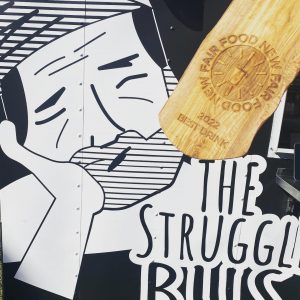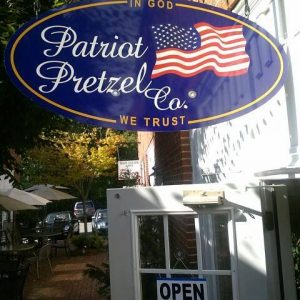The following article appeared in the American Guild of Organists, Lehigh Valley Chapter, Newsletter for March 2019. It is reprinted with permission of the author, Thomas Dressler. – NRK
Several years ago I was interviewed by a young newspaper reporter for one of my CDs, and when the article appeared in print, I laughed to myself when I saw that he referred to my traditional classical approach to music as “handmade music.” I was not surprised, though, because much of our discussion was centered on the techniques of playing and recording classical music. He was heavily involved in rock music, and the processes in that field are very different than in traditional classical music. In popular style music, technology is used to produce the end result, but in traditional classical music, we try to keep technology as transparent as possible. Every aspect of the music is controlled by the performer as it is taking place, and technology is used to transparently reproduce exactly what the artists’ skills produce. This was astounding to him.
For whatever reason, this interview came to mind recently. The memory caused me to muse on how many young people are so steeped in music made with computers and electronic equipment that the idea of making music “by hand” seems quaint to them. I tend to be a person who wants to understand other points of view, so I found myself asking why they should even be interested in our “quaint” way of producing art. (Why do we even bother trying to “sell” it?) Which led me to ask why I should even try to keep the “handmade” tradition alive in my church. Why not start using microphones, click tracks, prerecorded tracks, computers, etc.? I think we do have to sit down and face the fact that traditional organists and musicians are trying to sell fallible human achievement to at least one (if not more) generation that is steeped in music where much of the technical “stuff” is achieved by twiddling knobs … and sometimes music is even “composed” using computer generated chord progressions, etc. A certain sterile “perfection” is possible with very little effort.
Why is it important to keep the tradition of “handmade” music alive?
Hmmm. That got me thinking about my new hobby that I mentioned in a previous newsletter—shirtmaking. Why would one want to make a handmade shirt, or even buy a professionally handmade one, when you can go to a store and buy one made with computerized accuracy? Times have changed since the days of my mother’s youth when women made their own dresses out of feed bags. (She grew up on a farm, and the bags that animal feed came in were sometimes made of colored and printed fabric that could be used to make clothes.) Nowadays, it’s a quaint hobby to make your own clothes by hand. It’s an interesting mental exercise to think through some of the reasons I became interested in making shirts by hand and see whether there is a correlation to music-making. I’ll list some of my reasons. How many of them can be applied to what we traditional musicians do?
- The act of making a shirt can have a therapeutic effect on the maker, who overcomes challenges of skill (with practice) in order to make the shirt.
- The handmade shirt may have irregularities or slight imperfections, but these tend to draw the interest of viewers who then look at it more closely, knowing a person made it with human skill. It is interesting, maybe even because of slight imperfections.
- The shirt has a story. Rather than mindless mass production, there is a story about how one sleeve took three tries to ease in, how the bobbin thread ran out in the middle of this seam, etc. There are stories to tell about the challenges that were overcome. And that gives the finished product more personality.
- A handmade shirt can be tailored to fit a specific person.
- A handmade shirt can be personalized with the exact colors or types of fabric one wants.
Aside from these things, there is another very important clincher to me. I believe computerized beats and rhythms are unnatural to the human body. A computerized rhythm is like a perfectly straight ruler. But where in the human body do we find a perfectly straight line? Musicians typically count out rhythms, then they apply a mysterious human factor- -they “feel” the rhythm, which takes it one step further. It adds slight imperfections (usually without realizing they are doing it, because they are natural) that make the rhythm more human. The ancient Greeks were aware that for the lines in a very big building to appear straight to human eyes, a curve had to be incorporated that would make up for distortions in human perception. (Google “entasis” to learn about this.) I find that when I listen to old recordings of “pop” music made before computerized drumbeats, the rhythms seem to “pop,” because I think the “handmade” drumbeats incorporate the slight imperfections that make rhythm feel natural. I find that modern computerized rhythms make me physically uncomfortable, as I am very sensitive to how my body reacts to music. And I have found in recent years that students who grew up with computerized music have a difficult time “feeling” rhythms.
In churches, the traditional “handmade” ways of making music are being more and more pushed aside in favor of more electronic and computer-generated techniques. I think when these techniques are used to replace human effort and achievement, the resulting art is devalued and sometimes dehumanized. I am not against “pop” musical style itself, as I am a fan of the Beatles and other popular music. (And do not take this as a statement about non-pipe organs. I’m talking about musical techniques.) But I do feel that replacing human effort with electronic shortcuts is like replacing real flowers in church with plastic ones every week. You can eliminate the irregularities of nature and have something more convenient, but at what expense?
Getting back to the interview with the young reporter—he was very surprised when I said that in traditional art, computer-like accuracy is not a goal. My former teacher, James Boeringer, used to say that true art must include human imperfection. I agree with this and explained to the interviewer that my interpretations of music include intentional imperfections to enhance its effect. After our lively and very involved conversation, he went home and listened to the CD and wrote a very nice review. He wrote me saying how much he loved the music after hearing the explanation.
I am asking questions and bringing up these topics in many of my Dean’s Mixtures because these are issues and questions that many of us are facing in our positions, and I believe we need to think carefully about them. I wouldn’t expect that everyone would agree with my thoughts, but I do hope that these articles help provoke personal soul-searching on these topics. And I hope my experience with the young reporter points out the importance of thinking about these things and explaining our thoughts to those who may not understand why we do not want to take shortcuts that might make our jobs easier.
—Tom Dressler, Dean





Thomas Dressler, I absolutely agree with your thoughtful and well written words on “handmade music”. I too have recently discovered the power and intimacy of making music by returning to playing my circa 1775 Hubert travel clavichord build in 1999 by Gary Blaise of San Francisco. One could not ask for both a more responsive and challenging instrument on which to express oneself and the composer. To dial back from the sheer volume of more amplified music and mechanical touch to a simpler, direct connection to sound has been a reviving and revelatory experience. When I share that type of music with others who have never seen or heard such a thing, it has a surprising effect on them as well. For me, the real core of this is learning to appreciate the more exact and refined end of the spectrum, the range that is closest to our fingertips. Whether one is spinning, weaving, and tailoring shirts from flour sacks, or tuning our ears, minds, and hearts to find nuances of music making that feed our souls, one is on a richer path, “a road less traveled” that is in danger of becoming overgrown with weeds. Thank you and Nola for sharing this excellent reflection.